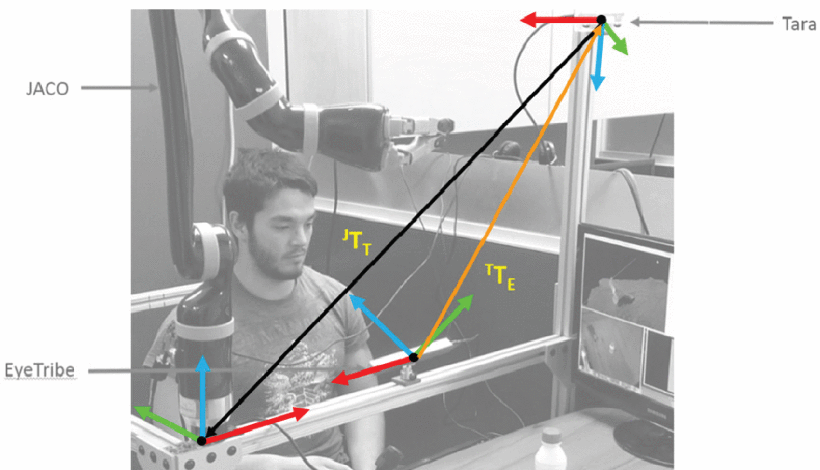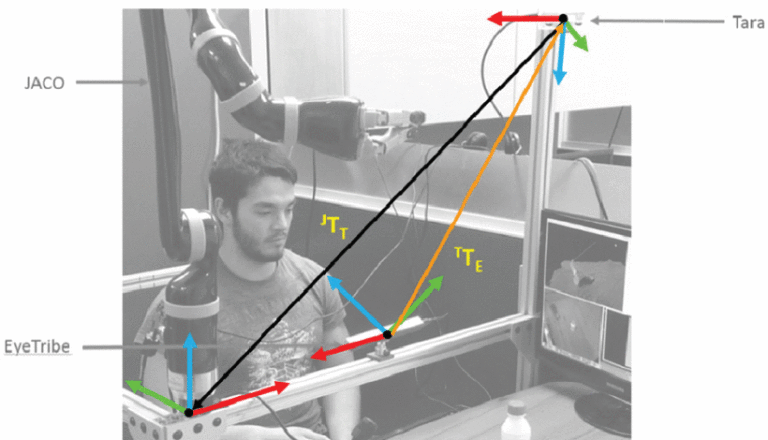
Assistive robotic arms have become popular to help users with upper limb disabilities achieve autonomy in their daily tasks, such as drinking and grasping objects in general. Usually, these robotic arms are controlled with an adapted joystick. Joysticks are user-friendly when it comes to a general approach to an object. However, they are not as intuitive when having to accurately approach an object, especially when obstacles are present. Alternatively, the combined use of artificial stereovision and eye-tracking seems to be a promising solution, as the user’s vision is usually dissociated from their upper limb disability. Hence, the objective of this study was to develop a proof of concept for the control of an assistive robotic arm using a low-cost combination of stereovision and eye-tracking. Using the developed control system, a typically developed person was able to control the robotic arm successfully reaching and grasping an object for 92% of the trials without obstacles with an average time of 13.8 seconds. Then, another set of trials with one obstacle had a success rate of 91% with an average time of 17.3 seconds. Finally, the last set of trials with two obstacles had a success rate of 98% with an average time of 18.4 seconds. Furthermore, the cost of an eye-tracker and stereovision remains below 400$.

